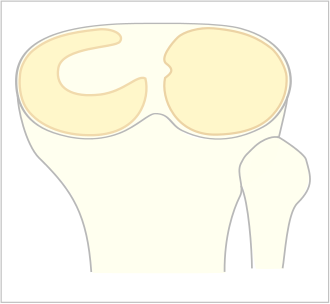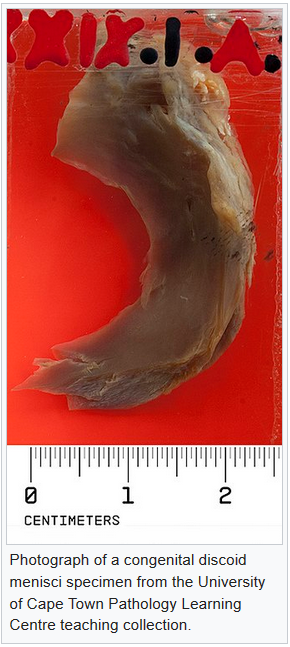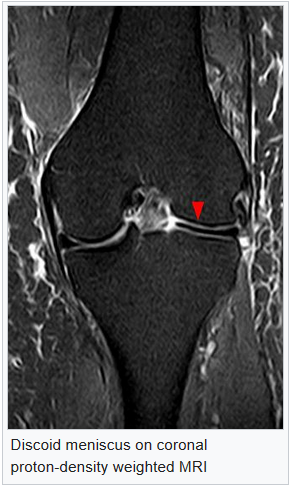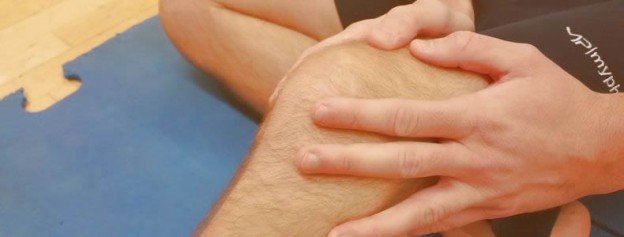nalco group
bone, muscle & joint pain physio
BOOK NOW / WHATSAPP ABOUT YOUR PAIN OR INJURY
- NOVENA 10 Sinaran Drive, Novena Medical Center #10-09, Singapore 307506
- TAMPINES 9 Tampines Grande #01-20 Singapore 528735
- SERANGOON 265 Serangoon Central Drive #04-269 Singapore 550265
Home > Blog > Physiotherapy > Conditions > Knee Pain > Discoid Meniscus Physiotherapy
Discoid Meniscus Physiotherapy

Discoid lateral meniscus
A discoid meniscus is an abnormally shaped meniscus (cartilage that cushions the bones of the knee) that is present in roughly 1% to 3% of people born in the United States (about the same rate in Singapore as well estimated).
The condition is the result of abnormal formation of the meniscus during development in the womb.
While some people may be unaware of their discoid meniscus and never experience symptoms related to it, they live at a higher risk of injury than those born with a normal meniscus. A discoid meniscus is commonly detected in childhood or adolescence, and often requires surgical intervention.
Our senior physiotherapists provide physiotherapy treatments
- prior to and following surgery
- for
conditions not requiring surgery (conservative management)
What is Discoid Meniscus?

Our knees contain 2 cushions between our thigh bone (femur) and shin bone (tibia), made of cartilage called meniscus. Normal meniscus is crescent-shaped and it's main role is to provide stability to the knee joint and absorb forces when we stand and move. Both menisci are attached to the shin bone (tibia) by the meniscofemoral ligament.
For this specific condition, discoid meniscus is present at birth.
It occurs when the cartilage does not properly develop, resulting in a thicker disc- or oval-shaped meniscus. The defect most often occurs in the meniscus on the outer (lateral) part of the knee joint.
Approximately 20% of individuals diagnosed with a discoid meniscus have it in both knees.
There are 3 types of discoid menisci. The classifications are:
- Incomplete Discoid Meniscus. The shape of the meniscus is a bit wider and thicker than a normal meniscus.
- Complete Discoid Meniscus. The shape of the meniscus is significantly wider than a normal meniscus, covering the shin bone (tibia).
- Wrisberg-Ligament Meniscus. The normally present meniscofemoral ligament is absent.
Their abnormal shape and thickness make discoid menisci more prone to injury and tearing; the reason for this is because the meniscus tissue is often not capable of healing itself due to its limited blood supply, which is required for tissue healing.
Meniscal injuries most commonly occur in activities that require sudden stopping, pivoting, and "cutting," such as in sports. Pain may also be present, sometimes without a specific injury to, or a tear in, the discoid meniscus
In some cases, arthroscopic surgery may be required to reshape the abnormal meniscus to make it as normal as possible.
How Does Discoid Meniscus Feel like?
With a discoid meniscus or torn discoid meniscus, you may experience:
- Pain in your knee, most often on the outer (lateral) side of the leg
- Sharp pain with running, jumping, cutting, or deep squatting
- Swelling in the knee
- Tenderness on the outer side, or less commonly on the inner side, of the knee
- Catching or locking of the knee while walking or squatting
- Loss of knee motion, particularly getting "stuck," while fully bending or straightening the knee
- Loss of strength in the quadriceps (thigh) muscle
- Discomfort with daily activities, like walking up and down stairs
How Is It Diagnosed?

Diagnosis of a discoid meniscus begins with a thorough medical history and physical examination.
Our senior physiotherapists will assess different measures of the knee area, such as
- motion
- strength
- flexibility
- tenderness
- swelling
We will perform several tests specific to the knee joint, and may ask you to briefly demonstrate the activities or positions that cause your pain, such as
- walking
- squatting
- stepping up or down stairs
If we suspects there may be an injury inside the knee joint, such as a discoid meniscus, we will likely recommend a referral to an orthopedic physician for diagnostic imaging, such as
- ultrasound
- x-ray
- MRI
An MRI, which looks at bones, muscles, and cartilage, is the best imaging source to identify a discoid meniscus and a tear in the meniscus.
how our senior physiotherapists can help

When you have been diagnosed with a discoid meniscus, our senior physiotherapists will work with you to develop a plan to help achieve your specific goals. If surgery is needed, we will work with you after surgery.
To do so, we will select treatment strategies in any or all of the following areas:
Range of Motion
An injury or surgery to the knee joint causes the joint to be irritated, often resulting in swelling and knee joint stiffness, resulting in loss of normal motion. While it is important to regain your normal knee motion, it is also important to allow your injury to heal, without placing excessive stress on the healing joint.
We will assess your motion, design gentle exercises to help you regain normal range of motion, and establish a plan that will balance joint protection with motion restoration.
Strength Training
We will teach you exercises to strengthen the muscles around the knee, so that each muscle is able to properly perform its job, and stresses are eased, so the knee joint is properly protected.
Our senior physiotherapists are trained in manual (hands-on) therapy. If needed, we will gently move your knee cap (patella) or patellar tendon and surrounding muscles to improve their motion, flexibility, and strength. These techniques can target areas that are difficult to treat on your own.
Pain Management
Many pain-relief physiotherapy strategies may be implemented; the most beneficial with knee pain is to apply cold therapy to the area, and decrease or eliminate specific activities for a certain length of time. We will help to identify specific movements or activities that continue to aggravate your knee joint, and will design an individual treatment plan for you, beginning with a period of rest, and gradually adding a return to certain activities as appropriate.
Functional Training
We're experts at training athletes to function at their best. We will assess your movements, and teach you to adjust them to relieve any extra stress in your knee.
